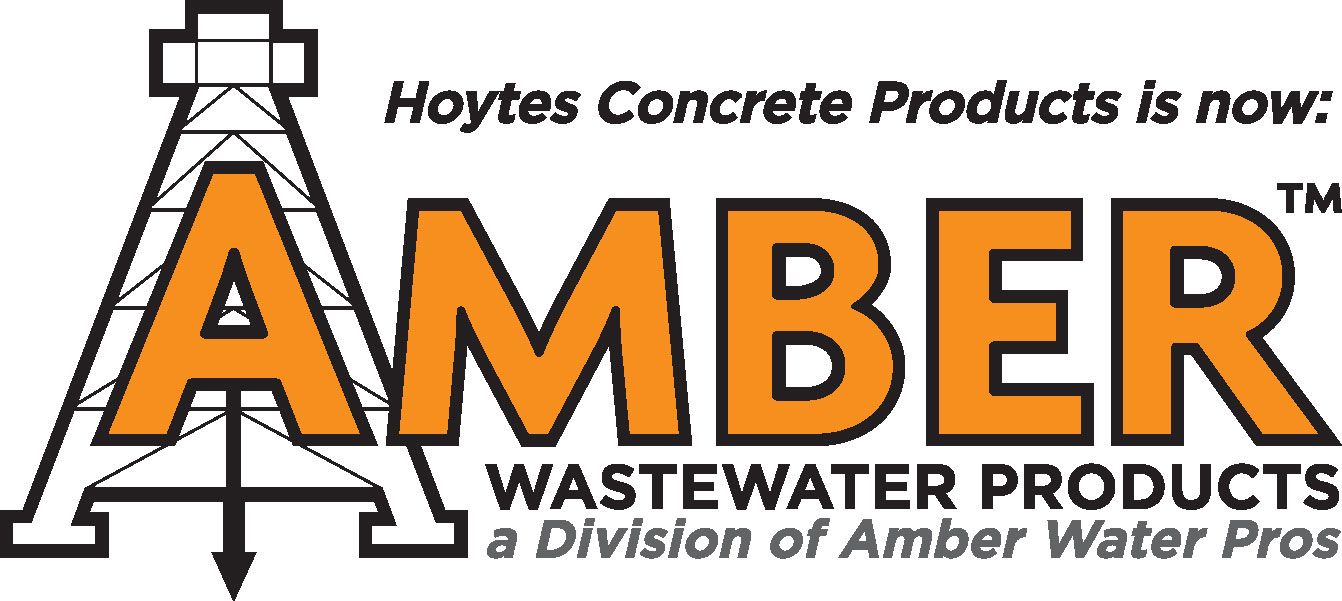UNDERGROUND TANK WARRANTY:
Amber Wastewater Products warrants such product against any defect in materials and workmanship, and, if used in accordance with approved installation, to be watertight, for a limited period of one (1) year from date of delivery. This limited warranty only applies to any products manufactured by Amber Wastewater Products.
If warranty service is needed, all claims must be made in writing within this one (1) year warranty period. The warranty is void if recommended backfill and installation procedures are not properly followed. (See attached)
This Warranty does not cover material damaged due to acts of God, misuse, improper installation/backfill, maintenance, or operation contrary to the recommended use, whether intentional or otherwise, or any other cause or damage that is not the fault of Amber Wastewater Products. This warranty will not apply if the equipment or materials have been modified, repaired or tampered with, or have been subject to negligence or misuse committed by anyone who is not an Amber Wastewater Products employee or has been authorized by Amber Wastewater Products or by accident.
The Customer’s sole and exclusive remedy for breach of warranty is limited to Amber Wastewater Products’ discretion to: (a) repair the defect, (b) deliver a replacement product to the original point of delivery, or (c) refund the original purchase price. Amber Wastewater Products must have the opportunity to inspect the product prior to it being removed or the claim will not be accepted. The original term of warranty will not be extended if a product is repaired or replaced.
In no event shall Amber Wastewater Products’ total liability hereunder exceed the original purchase price of the product.
Recommended installation and backfill procedures:
The proper installation of the septic tank is absolutely critical for maintaining the structural integrity and water-tightness that has been produced in the plant. Many of the problems experienced with leakage can be attributed to incorrect procedures during installation. In addition to damage to the tank, improper installation techniques could be a safety hazard.
Site Conditions
The installation site must be accessible to large, heavy trucks weighing up to 80,000 pounds. The construction area should be free of trees, branches, overhead wires or parts of buildings that could interfere with the delivery and installation of the onsite septic tank. Most trucks will need to get with 3 to 8 feet of the excavation to be unloaded.
Excavation
Prior to any excavation work, all buried utilities should be located. You should contact New York 811, by dialing 811, at least 48 hours but no more than 10 working days (excluding weekends and legal holidays) before beginning any digging project. Homeowners can also call 811, the national call before you dig number, to request that their lines be marked. Excavations should be sloped to comply with all construction safety requirements. Excavations should be sufficiently large enough beyond the footprint of the tank (typically 2 feet on each side of the tank) to allow room for adequate compaction.
Bedding
Proper use of bedding material is important to ensure a long service life of an onsite septic system. Bedding material should be used as necessary to provide a uniform bearing surface. A good base should ensure that the tank would not be subjected to adverse settlement. A minimum of 4 inches thick sand or pea gravel overlying a firm and uniform base is recommended, unless otherwise specified. A five (5) inch bed of aggregate (3/4 to 1 ½ inches in diameter) may be used in-lieu of the required four (4) inch sand or pea gravel. Tanks should be bear on large boulders or massive rock edges. Sites with silty soils, high water tables or other “poor” bearing characteristics must have specially designed bedding and bearing surfaces. In high water tables, structures should be properly designed so as to resist tank floatation.
Proper compaction of the underlying soils and bedding material is critical to eliminate later settlement, which can ultimately occur in all tank installations regardless of the tank material. Potential tank settlement is measurable, predictable and preventable. Proper evaluation of the original soil, bedding materials, water table, backfill materials and potential soil bearing stresses reduces the likelihood of later tank settlement. Set tanks level to provide the proper elevation drop from the inlet to the outlet.
Tank Placement
Prior to placement in the excavation, the tank’s orientation should be confirmed. Check the bedding material and ensure that the inlet penetrations face the residence. After placement in the excavation, check that the tank is level. The slope of the sewer line and tank elevation should meet the local plumbing and building codes.
Joint Seals
For two-piece tanks, use high-quality preformed joint seals. Surfaces should be clean. Seals should meet minimum compression and other installation requirements as prescribed by the seal manufacturer. During the time of installation, ambient temperatures below 50°F sometimes affect the compressibility of the sealant. Care must be taken to determine that tank sections installed on site have been properly sealed. Inspect the joint area to determine that the tank sections have been properly sealed. This will prevent soil materials from entering the joint area during the backfilling operations. Manholes and risers must also be properly sealed to prevent infiltration.
Backfilling
Backfill should be placed in uniform, mechanically compacted layers less than 24 inches thick. This fill should be equally placed around the tank. Backfill should be free of any large stones (>2 inches in diameter) or other debris. Each layer should be adequately compacted.
Concrete tanks can float if the water level in the hole is allowed to rise to high. To prevent tank floatation during backfilling, fill the tank with water, place soil on top of the tank or keep water pumped out of the hole until the backfilling is complete. In extremely cold weather conditions, it might be necessary for tanks to be insulated before backfilling. Cold temperatures tend to impede a tank’s natural ability to digest wastes through anaerobic processes. On the anaerobic process begins, cold should have no impact unless the tank is not utilized for long periods of time.
Voiding the Warranty
Failure to follow any and/or all of the above instructions may void any warranty that may apply to certain products.
PRECAST CONCRETE STEPS WARRANTY:
Amber Wastewater Products warrants the material and workmanship of their Precast Concrete Steps for a limited period of one (1) year from date of purchase. This limited warranty only applies to products that are manufactured by Amber Wastewater Products.
DO NOT USE salt or ice melt chemicals on precast concrete steps! This will void the warranty.
Warranty service must be requested within this one year warranty period. Any and all steps that are claimed to be “chipping or crumbling” will be tested for salt or ice melt chemicals prior to replacement. Amber Wastewater Products will fund this expense. However:
If the test comes back positive for salt or ice melt chemicals, any and all testing fees, including but not limited to, travel, fuel surcharges, materials used to collect samples and the employee’s time, will be billed to the owner of the steps and any and all warranties will be voided per violation of this policy.
If the test comes back negative, repairs or replacements will be made by Amber Wastewater Products, however the warranty will not be extended beyond the original warranty period. This warranty does not cover the costs associated with excavating or landscaping.
Amber Wastewater Products shall not warranty a product that has been damaged due to acts of God, accidents, misuse or abuse to the product or as a result of service by anyone other than Amber Wastewater Products.
In no event shall Amber Wastewater Products’ total liability hereunder exceed the original purchase price of the product.
Wastewater Product Specialists
© 2023 All Rights Reserved
Amber Wastewater Products


